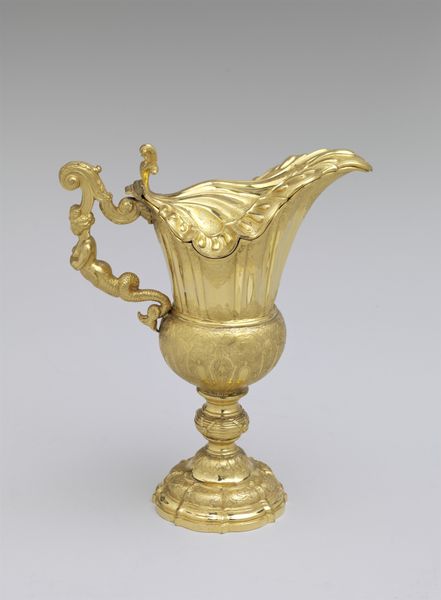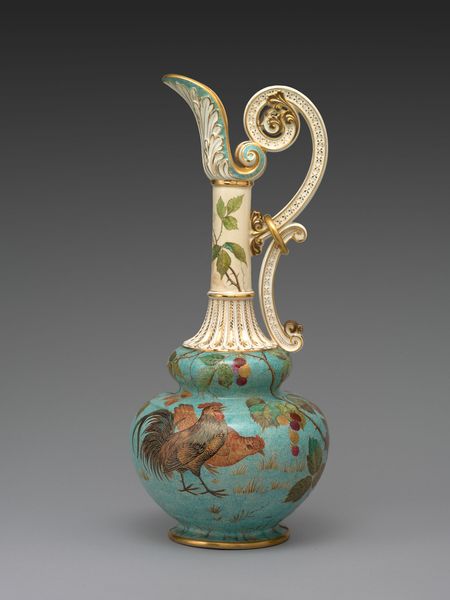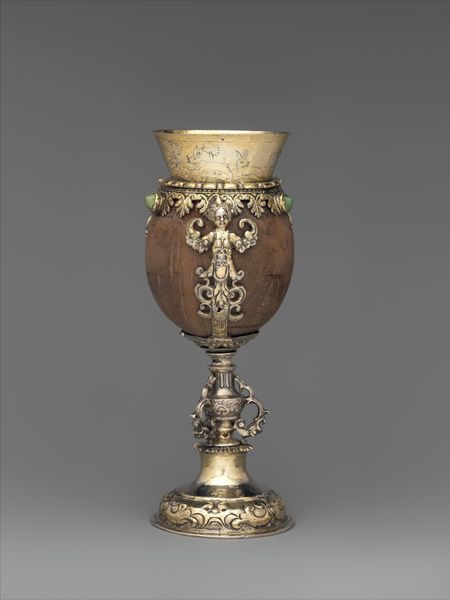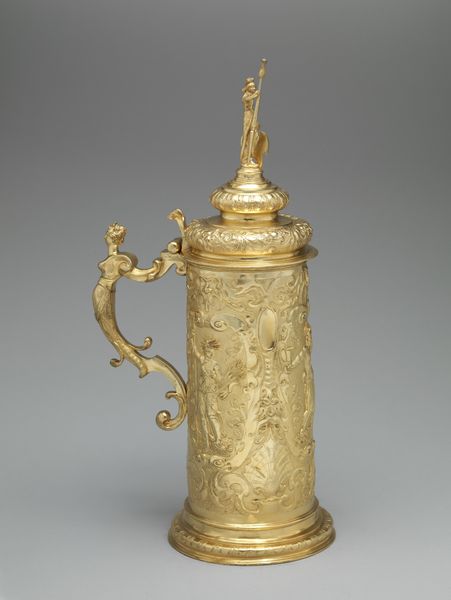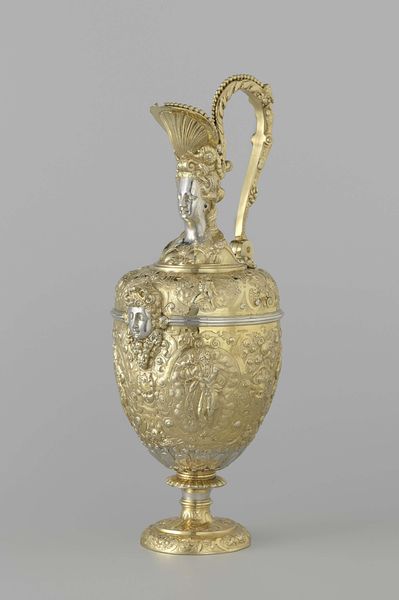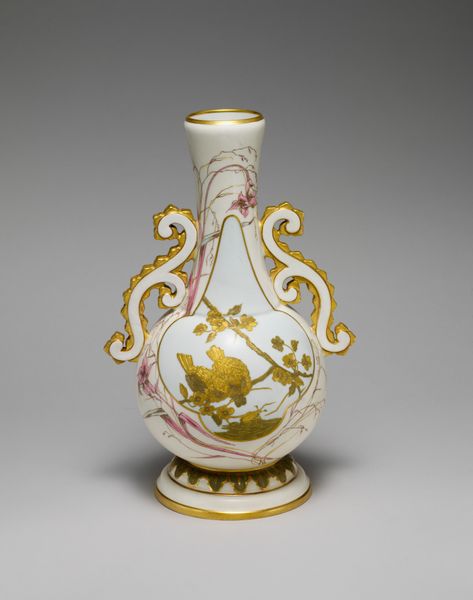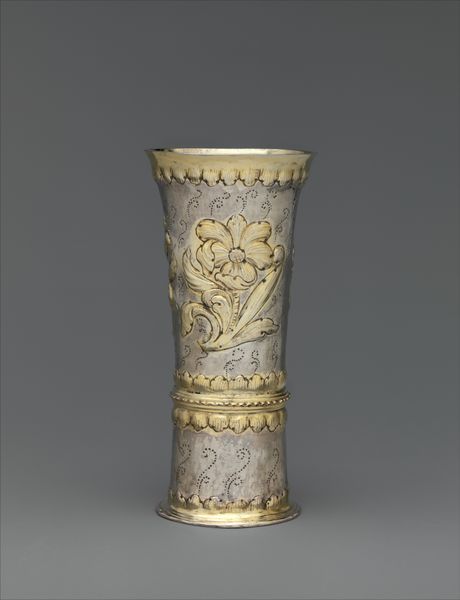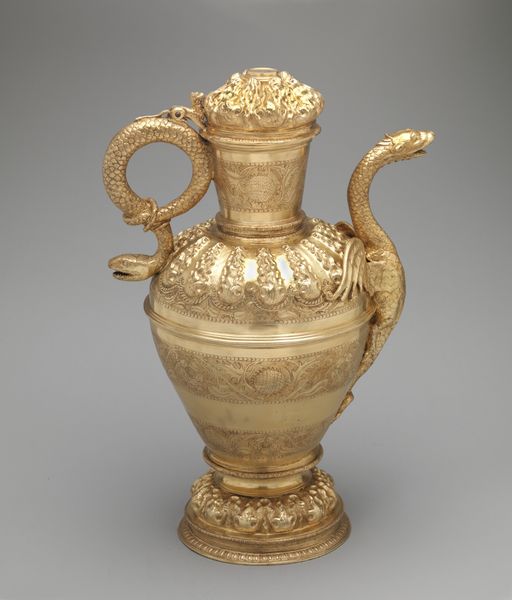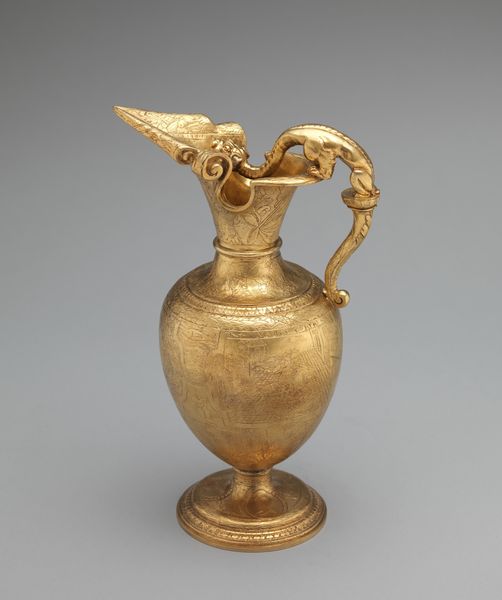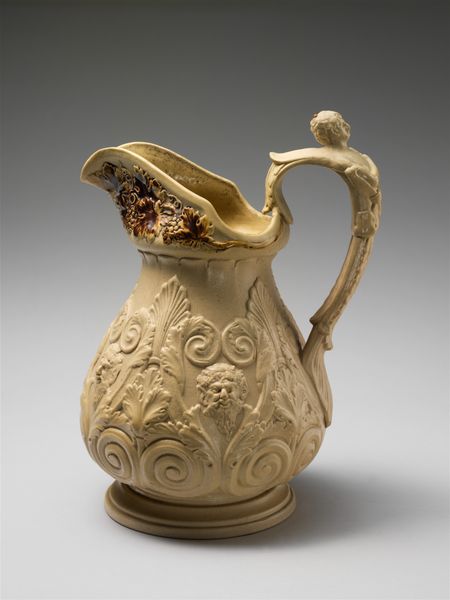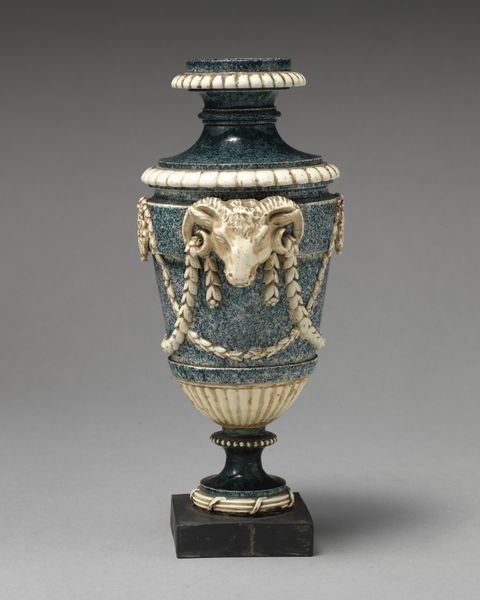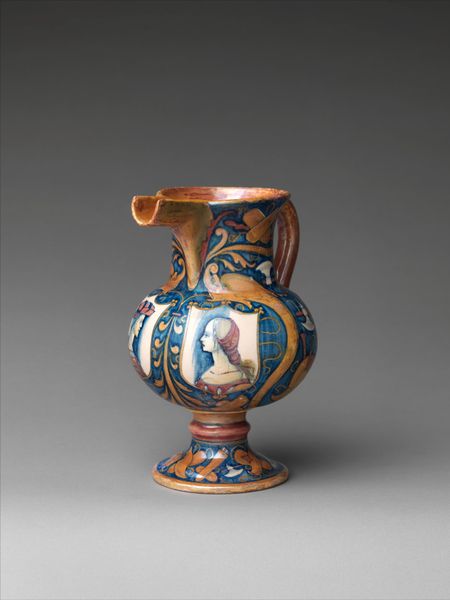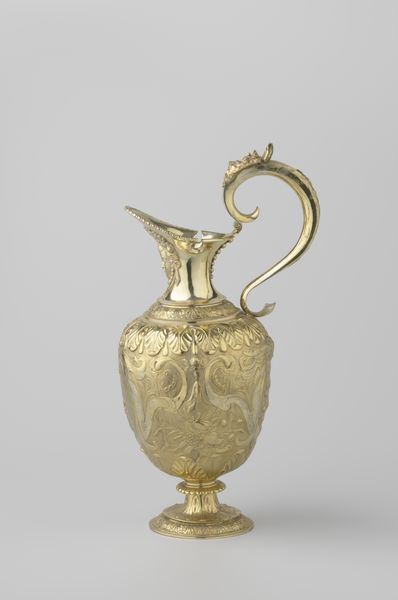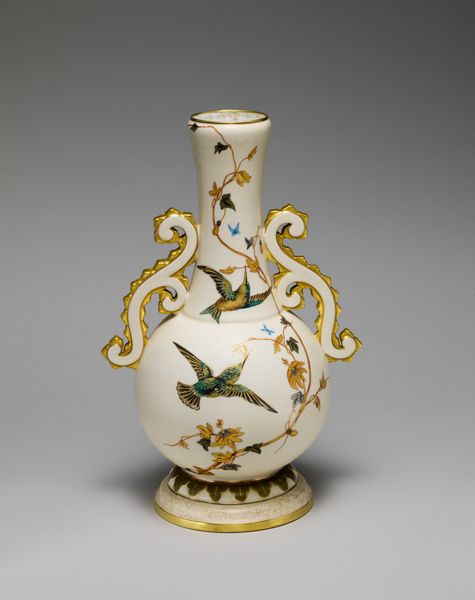
ceramic, earthenware
#
art-nouveau
#
ceramic
#
earthenware
#
orientalism
#
decorative-art
Dimensions: H. 22 in. (55.9 cm)
Copyright: Public Domain
Curator: This intricate object is an earthenware ewer, crafted by the Faience Manufacturing Company between 1886 and 1890. The piece resides here at the Metropolitan Museum of Art and presents a compelling example of decorative art embracing both Art Nouveau and Orientalist influences. Editor: Wow, first impression: it feels regal! Almost theatrical with that extravagant handle swirling like a dramatic gesture. It’s hard to imagine pouring everyday water out of something this ornate, more like an elixir for a royal drama! Curator: Exactly! Let’s consider the broader context. The late 19th century was a period of intense fascination with Eastern cultures, partly fueled by colonial expansion. Orientalism manifested as Western artists and manufacturers appropriated and reinterpreted motifs and aesthetics from Asia, often filtered through a European lens. Editor: I see it—that blue and gold medallion detail against the brown, that's where I instantly see an Asian flair mixing with, you know, that fancy Parisian vibe. Curator: Precisely! And if we dig a little deeper, Faience Manufacturing’s engagement with these styles reveals much about societal dynamics. Who had access to these items? Whose cultural heritage was being “consumed” and commodified? These questions underscore the power imbalances of the time. Editor: That's where it gets sticky, right? Because on one hand, it's so beautiful—that swirly handle just makes me want to touch it! But, yeah, thinking about where the "inspiration" came from shifts my perception entirely. Now I wonder what stories got flattened in the making of this…object. Curator: It also raises interesting questions about the creative process: to what extent is the artist or craftsperson aware of the cultural implications? How complicit are we, as contemporary viewers, in continuing cycles of appropriation? Editor: Good question, complicated. This isn't just about aesthetics; it's a mirror reflecting historical power dynamics. This beautiful thing now makes me ponder on that. Curator: Indeed. Art allows us to dissect these issues—to acknowledge historical complexities rather than sanitize them. This ewer becomes an intriguing relic and potent starting point for critical engagement. Editor: So, more than just a fancy water jug then? Art does that thing again—sneaking the big questions in through beautiful design.
Comments
No comments
Be the first to comment and join the conversation on the ultimate creative platform.
